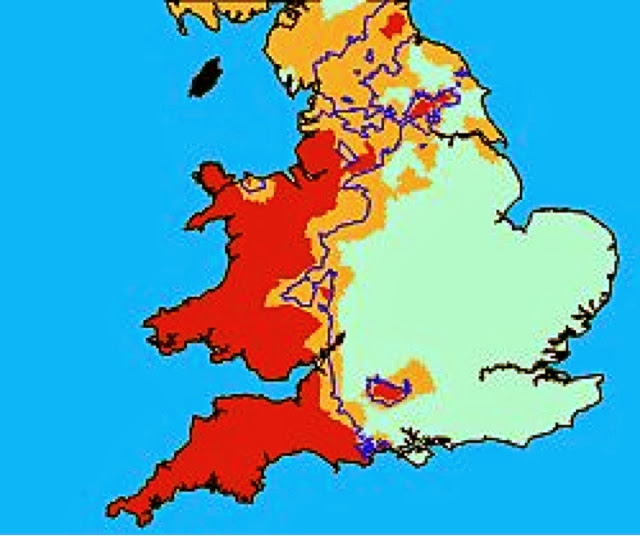House Spider Panic
Last night there was much consternation and gnashing of teeth from the front room as my daughter settled down to watch Celebrity Big Brother as a large spider crawled up the wall in front of her. I springing immediately into action, but only after I had taken a few photos, but the pressure was definitely on to "get it out of here!".
It is one of three or four possible Tenegaria species, though there are 11 species that occur in the UK and Northern Europe (1). All of which are very similar and can only be identified to species by genitalia. With no microscope of any idea of what I should be looking all I can do for now is get it to genus, confirmed via iSpot. However, judging by the palps it is a female. The most likely species it could are:
Tegeneria domestica (Common House Spider), body size up to 10mm. This is perhaps the most common but smallest of there species. Although virtually reliant on people's houses, this species can be found in cave entrances and inside hollow trees (2). They spin a sheet web that leads to a tubular retreat, in a corner if a room or behind a piece of furniture. Strands of silk extend beyond the main platform of the web forming a tangle of lines. Females hang their dirty-white egg sacs from ledges using a few strands of silk.
Tegeneria gigantea, in some sources it is named T. duellica (Cobweb Spider), body size up to 18mm. Tegenaria saeva and T. gigantea are identical in size and appearance and can only be separated by the form of the male palp and of the female epigyne in mature individuals (2). However, there does seem to a difference in distribution between the two with T. duellica tends to have a more easterly distribution (2). Based upon the distribution map shown below it is less likely that our lady is T. duellica, though it is possible.
Tegeneria saeva, body size up to 18mm. The distribution of both T. saeva (red) and duellica (green) are shown on the right (2). The brown area shows the overlapping distribution.
Tegeneria parietina (Cardinal Spider), body size up to 20mm. This is less likely as it has not been recorded in Wales (1). The common name comes from the story that spiders living in Hampton Court would terrify Cardinal Wolsey (2).
Large house spiders take two years to reach maturity, emerging from the egg sac in late spring and grow to about half-size by the following winter, during which, in most habitats, growth ceases as the food supply dwindles. In spring growth is resumed, with males maturing in July/August and females in September/October. In early autumn males go in search of females, and it is this time of year when these species are most noticeable, running across carpets and falling into sinks and baths. A male finds a female close to maturation and guards her until she undergoes her final moult. Mating then takes place on the female’s web after preliminary bouts of palp-tapping and abdomen-bobbing by the male. Afterwards the male continues to co-habit with the female, mating repeatedly, until he eventually dies. The female overwinters with stored sperm and the next spring produces a succession of egg sacs, each containing c. 40 to 60 eggs (3).
The word 'spider' derives from the Old English word 'spithra', which means 'spinner' (3). Today a great deal of research is underway in identifying ways in which engineered so that it can be replicated, however spider webs have been used to heal wounds and staunch blood flow for many years.
I like to try and learn and understand the etymology of names. The following has been defined by the British Arachnological Society (2).
Tegenaria - Latin ‘teges’, a mat; Latin ‘arium’, a place (referring to the sheet web); saeva - Latin ‘saevus’, cruel or savage; gigantea - Latin ‘giganteus’, of the giants, huge; duellica - Latin ‘duellicus’, warlike.
1: Roberts, M.J. (1996) Collins Field Guide Spiders of Britain and Northern Europe.
2: British Arachnological Society. http://wiki.britishspiders.org.uk/index.php5?title=Tegenaria_spp.
3: Encyclopaedia of Life (EOL). http://eol.org/pages/1200102/overview






Comments
Post a Comment